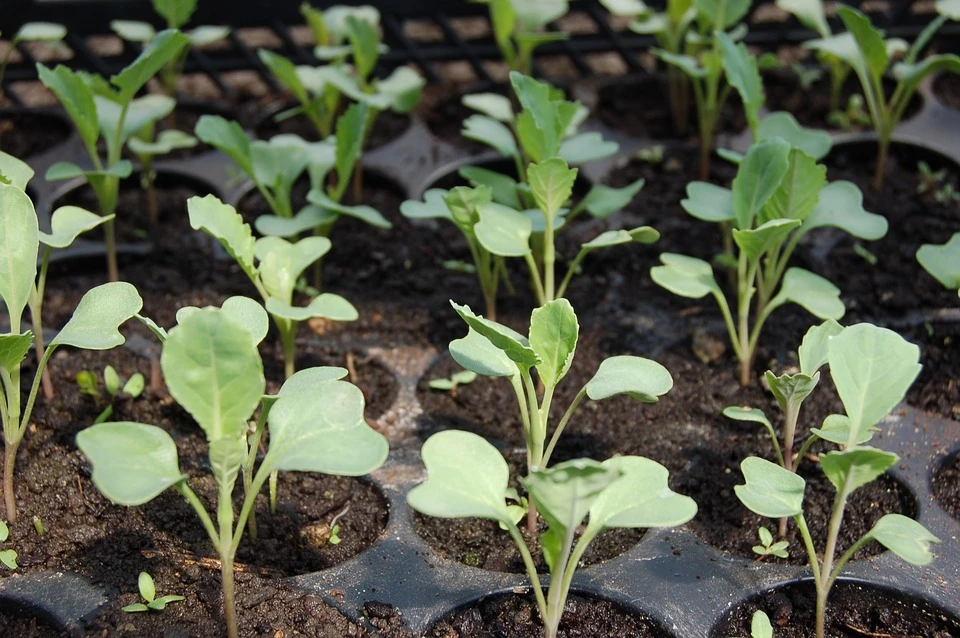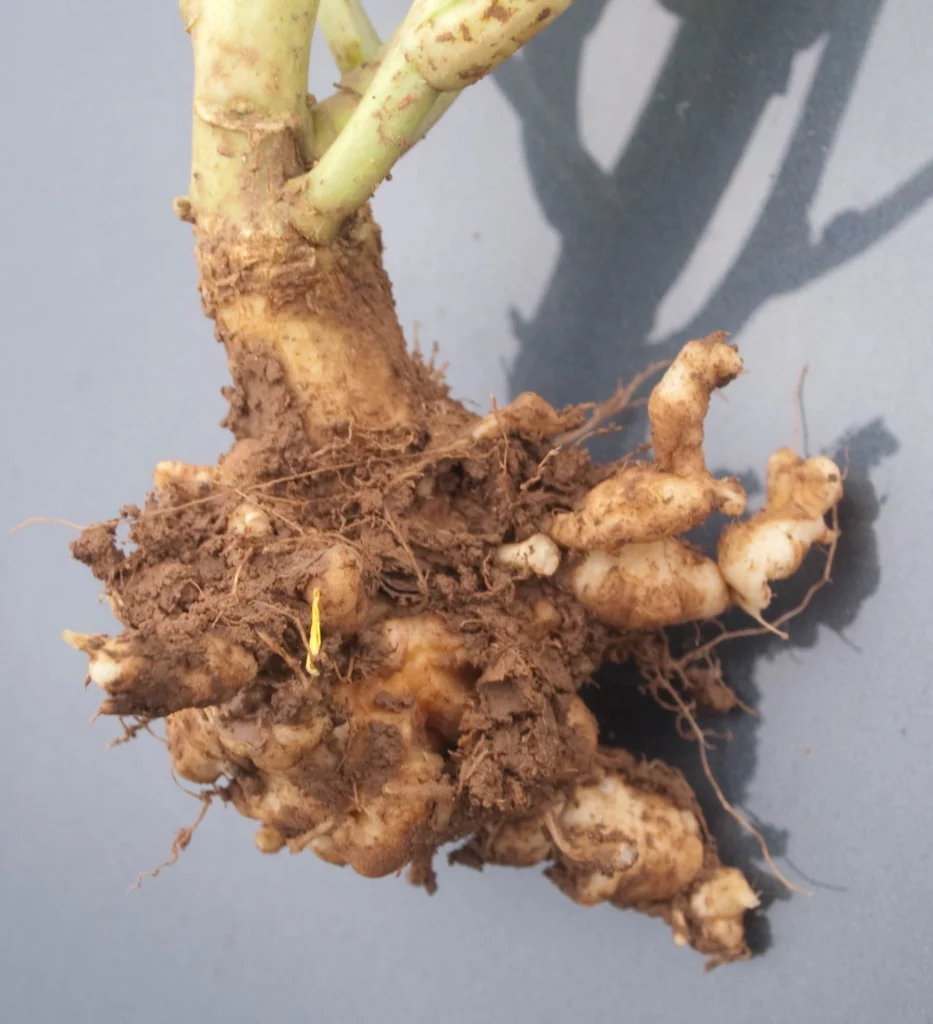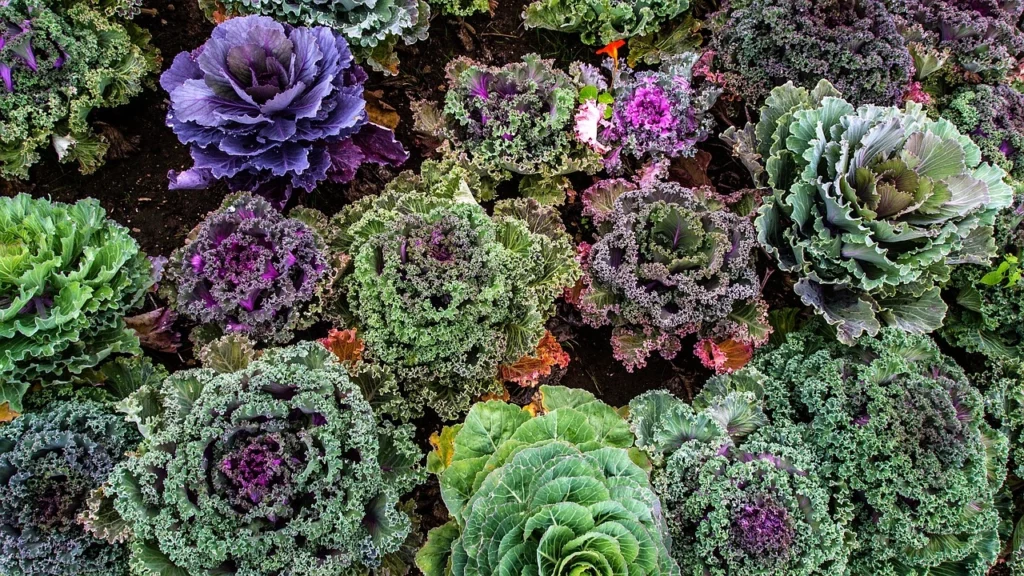Cabbage is in season all year round in Europe and already played an important role in the diet of the Europeanic tribes and Romans. Its high vitamin C and mineral content make it a healthy food that can be used in many ways. Learn here how to best plant, care for and harvest the different types of cabbage in your own garden.
At a glance
- Light requirements: sunny to semi-shady
- Soil: humus-rich, loose and loamy
- Nutrient requirement: heavy (high)
- Water requirement: medium, even
- Pre-growing: January – March (early varieties)
- Planting: March/April
- Direct sowing:
- Head cabbage: April – May (individual varieties also later).
- Kale: May – June
- Pak choi: July
- Planting distance: 40 x 40 cm (smaller varieties) or 50 x 50 cm (larger varieties)
- Planting depth: 3 cm
All cabbage vegetables originally descended from smaller wild forms. These wild cabbage species still grow in coastal areas along the Mediterranean or even on Heligoland. Like radishes, turnips, mustard or rape, cabbage belongs to the cruciferous family (Brassicaceae). The vegetable cabbage (Brassica oleracea) was already a valued useful and even medicinal plant among the Europeanic tribes and Romans. In the Middle Ages, cabbage was considered the “medicine of the poor” because, as we know today, cabbage contains abundant vitamin C, minerals and antibacterial mustard oil glycosides. Whether cooked, fermented or raw, cabbage is a vegetable you can enjoy all year round!
Contents
Cabbage’s rich variety of forms
Cabbage spares no expense or effort in its diversity either: thanks to various cultivars, the focus is always on different parts of the plant. In the case of head cabbage such as white cabbage, pointed cabbage, red cabbage or savoy cabbage, the leaves form a more or less compact head. Brussels sprouts always form these heads at the leaf axils of the large leaves. Black cabbage and kale also use the leaves, forming a palm-shaped canopy, unlike head cabbage. In broccoli or cauliflower, the inflorescence is consumed. Kohlrabi, on the other hand, forms a thickened shoot axis, which then looks like a tuber.
Locations for cabbage
Cabbage grows best in full sun locations, but can also handle partial shade. Almost all cabbage species are heavy feeders and therefore need plenty of nutrients for healthy growth. The only exception is kohlrabi, which is a medium grower. Turnips tend to prefer nutrient-poor soils. Cabbage thrives best in humus-rich, loose, loamy soil. Consistent irrigation ensures strong and healthy growth.
Crop rotation and mixed cropping
In a classic crop rotation, cabbage should always be the first crop to be grown on your bed. Afterwards, you can plant mid-range crops such as lettuce, chard, carrots, onions, beet or beans. Good mixed-crop partners are spinach, chard, carrots, potatoes, eggplant, tomatoes, peppers, peas, beans, cucumbers or leeks. Poor neighbors are other cruciferous plants, as well as onions, garlic, and strawberries.
Pre-growing & planting
You can proceed similarly with all head cabbages such as red cabbage, white cabbage, pointed cabbage and savoy cabbage. If you want to harvest already in May, you should start pre-breeding in January. Head cabbage, kohlrabi, cauliflower, broccoli and Brussels sprouts can also be grown in February and March. For this, it is best to choose suitable early varieties. The seeds are placed 3 cm deep in pots or multiplates filled with growing soil. For germination, cabbage plants need a germination temperature of about 16-20 °C as well as sufficient light and moisture. Therefore, it is best to place the pots on a windowsill or in a heated greenhouse. Starting in March, you can plant out head cabbages with a planting distance of about 40 x 40 cm. Broccoli, cauliflower, kohlrabi and Brussels sprouts can also go out from April. Be sure to cover the delicate young plants with a fleece at night to prevent them from freezing.

Direct sowing
Later summer varieties of head cabbage you can sow directly into the bed from April to early May. Kale can be sown from May to June. Chinese cabbage is sown from mid-June, while pak choi is sown from July. Individual varieties of pointed cabbage can also be sown until the end of August. When sowing in midsummer, however, it is essential to ensure regular watering so that the seeds germinate reliably and the young plants can develop healthily. Protect cabbage plants with a fleece in the fall so you can harvest them in the winter. About a month after sowing, you should prick out the young plants. These later varieties need a little more space than earlier ones. Therefore, make sure the planting distance is 50 x 50 cm.
Care & fertilization
As heavy growers, most cabbages require a lot of nutrients for healthy and vigorous growth. Before planting, you should have prepared your beds with mature manure or a compost-manure mixture. An additional application of compost in the planting hole also strengthens growth. Furthermore, you can also provide long-term fertilization in the bed with horn shavings or sheep wool (pellets). A layer of mulch provides humus and keeps moisture and warmth in the bed. Plant dips promote the formation of heads. It is best not to use stinging nettle liquid manure, as this can attract the cabbage white butterfly! In addition, make sure that your plants are watered evenly.

Harvesting and processing
For the most part, early cabbage varieties are suitable for fresh consumption, while late varieties are more suitable for storage. Late head cabbages can be stored in airy wooden crates in a cool, dark cellar. Choose only undamaged heads for this purpose and cover the crates with a jute or cotton cloth. Check the crates regularly for rot or mold. You can also overwinter some cabbages, such as savoy, green and butter cabbage, in the field. This way, you’ll always have freshly harvested vegetables on hand in the winter. To harvest head cabbage, cut off the stalk in the shape of a wedge. Green and black cabbage can be harvested after the first frost. Brussels sprouts are ready to harvest when the florets are about the size of a walnut. Pak choi and kohlrabi are particularly fast and can be harvested as soon as six to eight weeks after sowing. As diverse as the cabbage varieties are, the processing of cabbage is just as rich in possibilities. Roasted, steamed, raw, boiled, baked in the oven or fermented as sauerkraut or kimchi: cabbage can be enjoyed in a wide variety of ways.
Diseases and pests
As a preventative measure against pests, it is imperative that a growing interval of at least three years be observed between cruciferous crops. In case of disease infestation, this should be extended to five to six years.
Cabbage hernia: A fungal disease that attacks the roots and causes them to thicken in a lumpy manner. It reduces growth and can even cause the cabbage to die. Sprinkle a tablespoon of seaweed lime into the planting hole as a preventative measure and keep the growing season between cruciferous plants.
Cabbage gall weevil: The disease pattern is similar to that of cabbage hernia. To distinguish it, simply cut open the roots of the plant: If the roots are white and not hollow, it is most likely cabbage hernia fungus. If the roots are hollow, it is probably the cabbage gall weevil. In both cases, unfortunately, you should dispose of your plants as soon as possible, otherwise other plants may be infested. But beware: the cabbage hernia fungus can also survive in the compost and later infest your plants again.
Whiteflies: They sit on the underside of the leaves and suck on the plant sap, making the leaves sticky. Spraying with neem oil can help here.
Cabbage whitefly: the caterpillars eat the leaves and leave their droppings. They are very voracious and can eat entire plants bare. Therefore, after planting, the seedlings should be covered with vegetable protection nets. You can also prevent infestation by planting tomatoes and celery next to your cabbage.
Ground fleas: They eat holes in the leaves in dry weather. Keeping the soil evenly moist (through mulch, for example) can help prevent them.
Powdery mildew: If your cabbage plants are affected by the fungus, you can water them with horsetail liquid manure. This is very easy to make. You need field horsetail, water and a bucket. Then you can proceed according to the same principle as with nettle liquid manure. In addition, to prevent the fungus, it may be worthwhile to mix culture with garlic.

I hope you now feel like growing cabbage in your garden!


